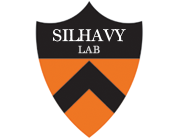The Activity of Escherichia coli Chaperone SurA Is Regulated by Conformational Changes Involving a Parvulin Domain
Type
UNLABELLED: The periplasmic chaperone SurA is critical for the biogenesis of outer membrane proteins (OMPs) and, thus, the maintenance of membrane integrity in Escherichia coli. The activity of this modular chaperone has been attributed to a core chaperone module, with only minor importance assigned to the two SurA peptidyl-prolyl isomerase (PPIase) domains. In this work, we used synthetic phenotypes and covalent tethering to demonstrate that the activity of SurA is regulated by its PPIase domains and, furthermore, that its activity is correlated with the conformational state of the chaperone. When combined with mutations in the β-barrel assembly machine (BAM), SurA mutations resulting in deletion of the second parvulin domain (P2) inhibit OMP assembly, suggesting that P2 is involved in the regulation of SurA. The first parvulin domain (P1) potentiates this autoinhibition, as mutations that covalently tether the P1 domain to the core chaperone module severely impair OMP assembly. Furthermore, these inhibitory mutations negate the suppression of and biochemically stabilize the protein specified by a well-characterized gain-of-function mutation in P1, demonstrating that SurA cycles between distinct conformational and functional states during the OMP assembly process. IMPORTANCE: This work reveals the reversible autoinhibition of the SurA chaperone imposed by a heretofore underappreciated parvulin domain. Many β-barrel-associated outer membrane (OM) virulence factors, including the P-pilus and type I fimbriae, rely on SurA for proper assembly; thus, a mechanistic understanding of SurA function and inhibition may facilitate antibiotic intervention against Gram-negative pathogens, such as uropathogenic Escherichia coli, E. coli O157:H7, Shigella, and Salmonella. In addition, SurA is important for the assembly of critical OM biogenesis factors, such as the lipopolysaccharide (LPS) transport machine, suggesting that specific targeting of SurA may provide a useful means to subvert the OM barrier.

